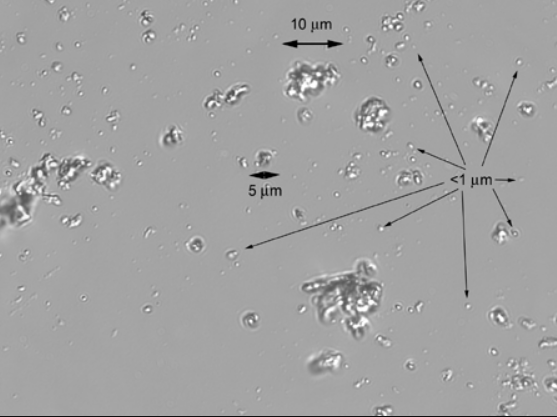We're trying to compile a lot of information about respirable silica particles ( #silica-monitoring ) -- an air pollutant affecting communities near frac sand mines -- as part of the #basic-microscope project to affordably and easily view them through Do-It-Yourself microscopes.
But what do respirable silica particles actually look like through a microscope? It'll be great to have an example to look at at the upcoming event in Wisconsin:
https://publiclab.org/notes/gretchengehrke/02-20-2018/particle-visualization-event-in-hixton-wi

TXSharon posted this note about photographs of sand dust from a sandbox:
http://www.texassharon.com/2012/07/31/take-this-nice-fracking-sand-for-your-childrens-sand-boxes/
Reply to this comment...
Log in to comment
This blog is by someone who works for an energy company, helping to mine frac sand, and publishes a book called "Finding Frac Sand" -- yikes.
The image posted is probably of particles way too big to help us that much, but it's interesting to see the color difference and also the note about how acids will dissolve non-silica particles. Maybe there's a way to use their knowledge against them...
http://www.globalenergylaboratories.com/creepy-clowns-terrify-us-all/
Reply to this comment...
Log in to comment
Note these prior questions related to this one:
https://publiclab.org/notes/mathew/10-07-2016/sizing-images-at-portland-science-hackday
And this, where he tries to size a known diameter particle: https://publiclab.org/notes/mathew/08-23-2016/calibrating-a-microscope
https://publiclab.org/questions/gretchengehrke/09-21-2017/is-it-possible-to-accurately-size-inhalable-and-respirable-particles-using-a-diy-microscope
https://publiclab.org/questions/gretchengehrke/09-21-2017/is-it-possible-to-discern-jagged-from-rounded-particles-using-a-diy-microscope
Reply to this comment...
Log in to comment